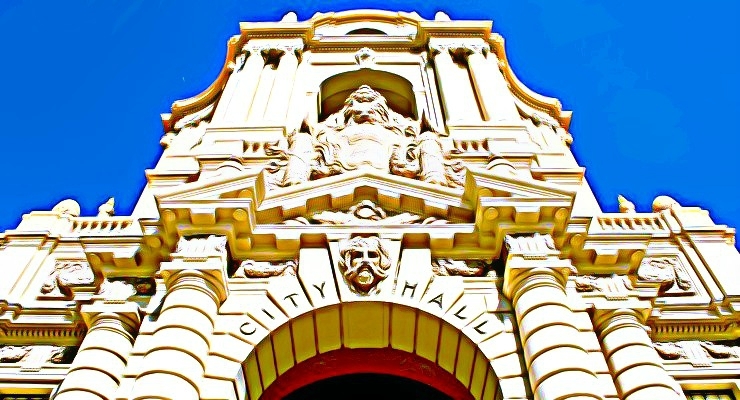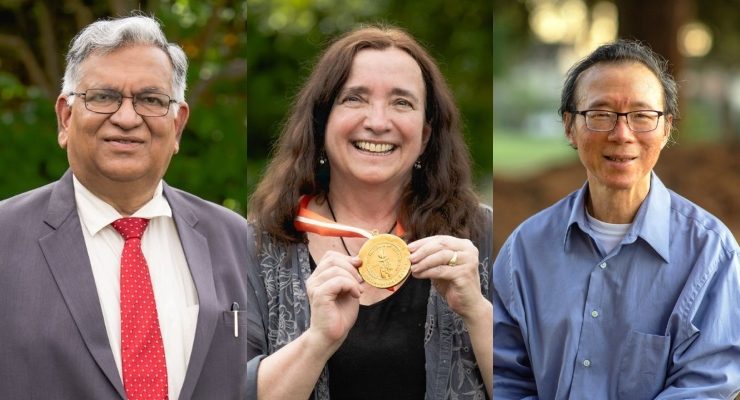
Caltech’s annual Distinguished Alumni Awards recognize “a particular achievement of noteworthy value, a series of such achievements, or a career of noteworthy accomplishment.” The 2022 luminaries include India’s preeminent earthquake engineer, who helped improve his country’s seismic codes; a vaccine designer who first identified the SARS-CoV-2 virus’s evolution; and an electrical engineer whose work ushered in the era of broadband cable and wireless internet.
The nominations for the 2023 Distinguished Alumni Awards are now open. Go here to nominate an alumna or alumnus to receive the DAA, the highest honor the Institute bestows upon a graduate, in recognition of a particular achievement of noteworthy value, a series of such achievements, or a career of noteworthy accomplishment.
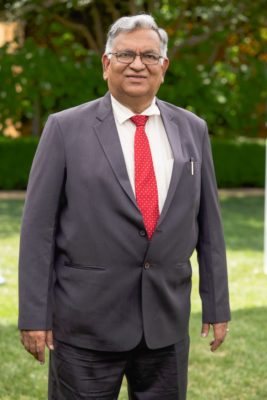
Sudhir Jain
MS ’80, PhD ’83, Civil Engineering
Earthquake Engineer and University Administrator
For his lifesaving impact as India’s preeminent earthquake engineer; for his research, advocacy, and establishment of training programs for engineers and of seismic building codes; and for his leadership in higher education, first at the Indian Institute of Technology Gandhinagar and then at Banaras Hindu University.
Sudhir Jain arrived at Caltech from India in September 1979 to pursue a PhD in earthquake engineering, and it did not take long for the San Andreas Fault to give him some firsthand experience. On October 15 of that year, a magnitude 6.5 earthquake struck the Imperial Valley and damaged buildings in El Centro, about 20 miles from the U.S.-Mexico border.
“Ron Scott [a former civil engineering professor at Caltech] sent a senior student who was doing a PhD with him to El Centro, and he said, ‘Take Sudhir with you,’ ” recalls Jain. “I went to El Centro, saw what an earthquake can do, and came back with structural drawings of a building that had been severely damaged. Not long after, I was in the library, and George Housner [a former Caltech professor considered to be a pioneer of earthquake engineering] walked up to me and said, ‘I hear you have the drawings. Come and discuss it with me.’ It was a good early introduction to my studies.”
Over the next 35 years, Jain became India’s leading earthquake engineer as well as a successful university administrator. As founding director of the Indian Institute of Technology Gandhinagar, where he worked for more than 12 years beginning in 2009, he led the institute to prominence and cultivated an undergraduate engineering program that emphasizes liberal arts education and project-based learning. In early 2022, he started a three-year term as vice chancellor of Banaras Hindu University.
“I moved from a very small new school to Asia’s largest residential university, which is more than a hundred years old,” Jain says. “It was like you are playing cricket, and now you have to play tennis.”
Jain moved back to India after he completed his PhD in 1983, and he began teaching at the Indian Institute of Technology Kanpur. A few years later, a second major quake changed the trajectory of his life. In 1988, Jain visited the site of a 6.6 magnitude earthquake in India’s Bihar state, which left more than 1,000 people dead and thousands of others injured in both India and Nepal, and immediately knew he had to do more to help developing nations such as India prepare for this type of natural disaster.
“I went with a couple of students to see what the earthquake had done. When I came back, I realized that saving people from earthquakes is my calling. If there’s an earthquake in California, less than 100 people die. But if an earthquake were to take place in India or Pakistan or Iran, maybe 10,000, 20,000 people die, or even more. It didn’t make sense. I took a view that publishing in international journals was less important than being useful to the community and society.”
He has since worked with government officials to reform India’s seismic building codes and implement training programs for engineers. Jain says Caltech helped instill in him the value of working for the public good.
“Caltech taught me to not be very careerist, to not worry too much about promotions or awards or fellowships, things like that,” Jain says. “It was a very nurturing experience.”
In addition to his real-world reforms, Jain also helped broaden the field of earthquake engineering in his country. Following his advocacy work, which began in the late 1980s, more institutions began to teach earthquake engineering. Before that time, only the Indian Institute of Technology Roorkee, where Jain earned his bachelor’s degree in civil engineering in 1979, offered the major.
“I was able to take the field to a lot more institutions,” he says. “I was able to build a community of people interested in earthquake engineering, both in academia and outside of academia.”
Jain kept up a relationship with Housner, the former Braun Professor of Engineering, Emeritus, until Housner’s death in 2008.
“He would from time to time type out a letter and send it to me, sometimes with an article or newspaper clipping, sometimes with a book. He kept me in his thoughts.”
Jain describes his time at Caltech as a “life-changing experience,” in large part due to the trust the Institute places in its students, which he has tried to implement in his own career.
He has fond memories of other places in Pasadena too. “There was a restaurant, Burger Continental,” Jain says. “They used to make some excellent falafel.”
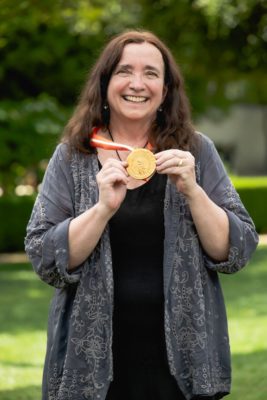
Bette Korber
PhD ’88, Chemistry
Theoretical Biologist
For pioneering achievements in virology research and computational vaccine design, providing hope against diseases such as HIV/ AIDS, and for continuing to equip the scientific community with insights into HIV and SARS-CoV-2, the virus that causes COVID-19.
A scientist at the Los Alamos National Laboratory in the Theoretical Biology and Biophysics Group, Korber is a global leader in the study of how viruses change over time and how vaccines can be constructed to combat them. Her computational strategies have enabled vaccine designs for high- ly variable viruses like HIV, hepatitis C, influenza, and filoviruses, and her HIV mosaic vaccine designs are currently being tested in human clinical trials. She has put this vast expertise in tracking variants to use during the COVID-19 pandemic.
“The SARS-CoV-2 virus continues to evolve, and selective forces favor it becoming more infectious and immune resistant. The evolutionary story of this virus is still unfolding,” she says.
One of Korber’s most significant contributions to that story was to initially demonstrate in spring 2020 that SARS-CoV-2 was, in fact, evolving. She analyzed viral sequences sampled globally and found a more transmissible variant of the virus that was rapidly replacing its ancestral form. Whenever it entered a population, the newer form would soon become prevalent locally; this was happening simultaneously in multiple locations around the world. The ensuing paper, published in the journal Cell in August 2020, has been cited thousands of times, though it initially drew much skepticism in the biology community.
“In early 2020, most of my peers were saying this virus was not evolving,” Korber says. “I felt strongly the data supported the view that it was becoming more transmissible. Now this is well accepted. Fortunately, I had a great team at Los Alamos, and incredible experimental colleagues led by David Montefiori at Duke, who were able to prove what I was seeing through analyses of the sequence data.”
Mathematical modeling has fascinated Korber since before she arrived at Caltech. “Even then, it was understood that our fossil fuel dependency was eventually going to lead to global warming,” she said. “I was a chemistry major, and I wanted to work on ways you could use solar energy to bypass fossil fuels,” which would have involved mathematical chemistry. But she was as- signed to an advisor who had different ideas. “He thought I should do experimental biology because that’s all women could do. He was resolute about this. We argued bitterly about it my first year.”
Korber grudgingly took the biology classes he assigned but found a silver lining: a professor who helped her appreciate the science of immunology. “I had a great teacher, Ellen Rothenberg [Edward B. Lewis Professor of Biology]. Immunology is very beautiful, and she made me want to understand it more,” Korber says. “It turned out to be a good scientific path.”
Around the same time, a Caltech physics student named Brian Warr, a close friend and housemate of Korber and her husband (James Theiler, PhD ’87), became one of the early patients in Los Angeles diagnosed with HIV. His situation played a significant role in her career choice.
“Brian had a magnificent mind and was a wonderful man,” she says. “When he first got HIV, we didn’t fully understand what it meant for him, but we knew that people were dying of this new disease. I hoped that by studying HIV, I could maybe help Brian and ultimately others in his situation. Effective treatment came too late for Brian. We lost him to AIDS in 1992.”
The study of viral evolution and how it impacts vaccine design is transforming, Korber says. The Global Initiative on Sharing Avian Influenza Data (GISAID), which began as a data-sharing hub for influenza sequences, took on SARS-CoV-2 sequences in 2020. GISAID allows researchers to both share and access newly collected viral sequences from all over the world in close to real time. This was a big change from earlier in Korber’s career when the most recent HIV-1 sequences she and others worked with were generally sampled several years, not several weeks, prior. The shortened window enables scientists to define and track newly emergent SARS-CoV-2 variants and re- solve phenotypic changes that might impact public health. For COVID-19, it provides vital information regarding when to shift to a new vaccine component, such as the addition of an Omicron variant to the SARS-CoV-2 vaccines this fall.
“There are over 13 million SARS-CoV-2 sequences currently in GISAID,” Korber says. “To mine this unprecedented wealth of data, we are having to invent the computational tools as we use them. Those of us who do the computational work distill this information for our colleagues, who then test the newly emergent variants experimentally as quickly as possible. It’s an ongoing challenge.”
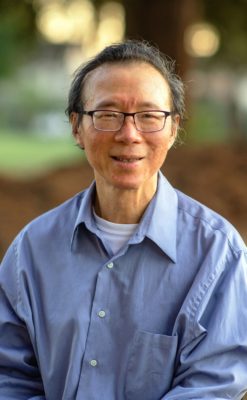
Kam-Yin Lau
BS ’78, MS ’78, PhD ’81,
Electrical Engineering
Electrical Engineer
For his innovations in and commercialization of laser diode and radio-over-fiber technologies that broadly enable today’s wireline and wireless high-speed internet access as well as enabling progress in interplanetary exploration, radio astronomy, and particle physics research; and for his remarkable artistic contributions to the Chinese ink painting movement.
The residents of what is now Venerable House had a nickname for Kam-Yin Lau.
“I was known as the invisible man, because they never saw me there,” Lau said. It took a lot of work to complete both a bachelor’s and master’s degree in only three years, and a doctorate three years later. So, Lau preferred to spend time in the lab or to study in what is now called the Caltech Hall library, especially at night, when the dorm became too noisy for him.
“I used to stay very late,” Lau said. “Usually until after the campus security guards made their last round.”
Lau grew up in Hong Kong, where his passion in high school was not science but modern Chinese ink painting. In fact, the Hong Kong Museum of Art acquired one of his pieces when Lau was 16, and it remains in its permanent collection. Five other pieces of his artwork are now in the collection of the Hong Kong Museum of Education.
Lau first heard about Caltech after reading a book about Qian Xuesen (PhD ’39), a student of aeronautics pioneer Theodore von Kármán and one of the founders of the Jet Propulsion Laboratory (JPL), which Caltech now manages for NASA. Though Lau intended to follow Qian’s footsteps in aeronautical engineering, some fellow Caltech students from Hong Kong convinced him that it would not offer a viable career path: he could not work in the United States because he was not an American citizen, and the industry was nonexistent back home. Lau switched to electrical engineering, intrigued by lasers and the burgeoning field of fiber optics. He studied with John R. Pierce (MS ’34, PhD ’36) as an undergraduate and completed his PhD in the lab of Amnon Yariv, the Martin and Eileen Summerfield Professor of Applied Physics and Electrical Engineering.
In the summer of 1979, Lau was invited to participate in a program at JPL that involved the development of an ultrastable radio-over-fiber time-and-frequency synchronization system for arraying widely spaced large antennas in JPL’s Deep Space Net- work (DSN). If successful, this system would significantly improve tracking and navigation accuracy of interplanetary spacecraft and data rates sent back to JPL. With Yariv’s permission, Lau “moonlighted” at JPL while pursuing his PhD research. By the time he completed his thesis two years later (on high-speed laser diodes), he had finalized the system design with JPL’s George Lutes.
Yariv then invited Lau to join Ortel Corp., a startup he had just co-founded, as its first employee. Lau worked as Ortel’s founding chief scientist until 1988. The company developed and manufactured the high-speed laser diodes and radio-over-fiber links required for implementing the ultrastable fiber system in JPL’s DSN.
This system was put to the test in 1991 when the Galileo spacecraft’s main antenna failed to deploy on its mission to Jupiter, a planet more than 600 million kilometers away from Earth. The antenna arraying capabilities of the DSN antennas that Lau and Lutes’ work enabled, along with data compression and receiver improvements, allowed more than 70 percent of the original mission’s objectives to be completed with Galileo’s smaller, low-gain antenna.
Ortel’s products also provided the infrastructure for cable and wireless internet transmission across the globe. “The radio-over-fiber systems we developed at Ortel transformed the cable industry,” Lau said. “At home, I use bundled TV, internet, and phone services. I think about it once in a while, that this is something my Ortel colleagues and I contributed to.”
After leaving Ortel in 1988, Lau had a two-year stint at Columbia University before he joined UC Berkeley in 1990 as a professor of electrical engineering and computer sciences. Later, he also served as founding chairman of LGC Wireless, a company he started with three of his Berkeley students. LGC’s Distributed Antenna Systems brought broadband wireless cov- erage to formerly hard-to-reach spaces inside buildings, tunnels, and underground structures.
While Lau’s work has helped enable our fast-paced modern world, he still savors the peace and quiet of the Caltech Hall library. “If I could, I would go back to its top floor at night and take in the view,” Lau said. “Along the crest of Mount Wilson, you could see a line of faint blue lights set against the grid of yellow streetlights below. It’s really quite mesmerizing.”


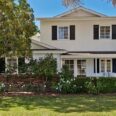

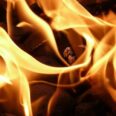
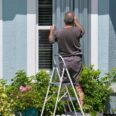

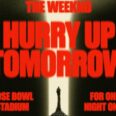






 2 comments
2 comments



